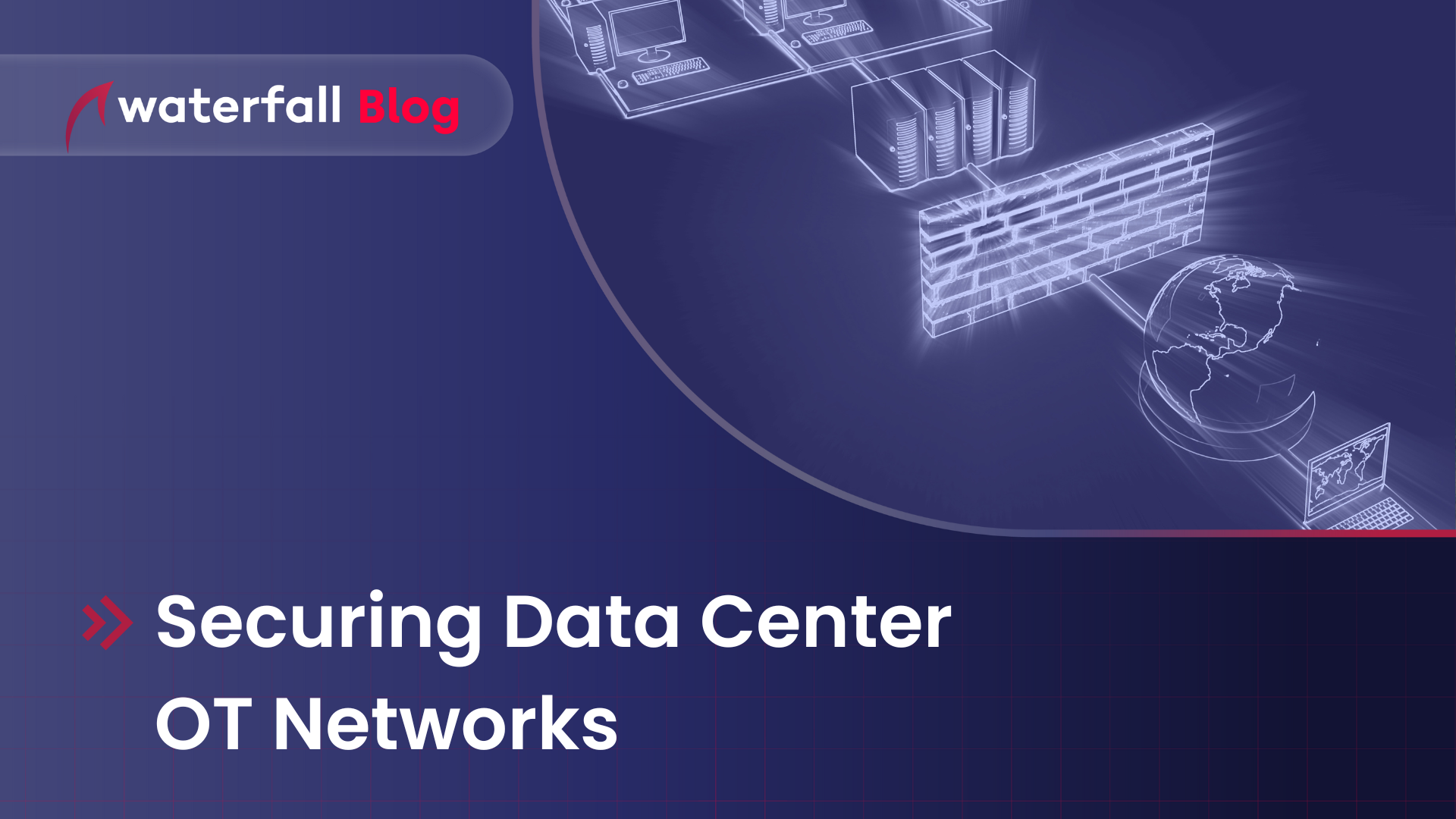Securing Data Center OT Networks
What are data center OT networks? How are they different from other OT networks? What are their vulnerabilities, and what are the consequences of their vulnerabilities?
Waterfall team

What are data center OT networks?
Data center OT networks and systems are specialized industrial control systems that manage the physical infrastructure and systems throughout a data center. They enable real-time control and monitoring of critical functions such as power distribution, cooling, physical and access control. These OT networks are ideally isolated from IT networks to maximize security, rely on specialized OT communications protocols and often have redundant systems to ensure reliability and resilience.
How are data center OT networks different from other OT networks?
Data center OT networks differ from other OT networks in that many other OT systems operate critical industrial infrastructures. Data centers are generally not considered industrial infrastructure, but critical information infrastructures. In both kinds of infrastructure, yes, worker safety comes first – especially in the parts of the data center dealing with high voltage electricity or fire suppression. In data centers however, worker safety concerns and risks are more contained than in industrial infrastructures, and the big priority is the reliability of data center functions – the functions providing the informational infrastructure.
When it comes to data centers, uptime is a very important key performance indicator.
Data Center Cyber Risks
When it comes to data centers, uptime is a very important key performance indicator (KPI).
Let’s look at major infrastructure components in data centers and how they can impact uptime:
BMS (Building Management System):
The BMS plays a critical role in monitoring and controlling various aspects of the data center’s physical environment, such as temperature, humidity, and airflow. Cyber risks related to the BMS can include unauthorized access, manipulation, or disruption of the system. Attackers might exploit vulnerabilities in the BMS software or hardware to gain control of critical infrastructure, potentially leading to data center downtime or equipment damage. Additionally, if the BMS is integrated with other systems, such as fire suppression or access control, compromising the BMS could have cascading effects on overall data center security and even worker safety.
EMS (Electrical Management System):
The EMS manages the electrical distribution and power systems in the data center. Cyber risks in the EMS can lead to power-related issues, such as disruptions to Uninterruptible Power Supplies (UPS) or failures in power distribution. Attackers could exploit weaknesses in the EMS to cause power outages, leading to data loss, service interruptions, and potential electrical hardware damage that could lead to much longer term outages. Moreover, unauthorized access to the EMS might enable attackers to manipulate power settings, increasing the rate of wear on computer components and increasing the rate of transient “glitch” style outages among computers in the data center.
SEC (Security Management):
The SEC is responsible for maintaining the data center’s overall physical security posture, including access controls, video surveillance, and threat detection. Cyber risks in the SEC can result in intruders gaining unauthorized physical access to critical areas, and cyber attackers tampering with security systems, or disabling surveillance mechanisms. Moreover, if the security systems are interconnected with other data center components, an attack on the SEC might be used as a gateway for further infiltration.
DCIM (Data Center Infrastructure Management):
The DCIM plays an important role for optimizing the management systems of data centers. With a wide suite of tools, DCIMs empower data center administrators to monitor, analyze, and control every aspect of their facility’s infrastructure from power and cooling systems to server utilization and asset tracking. By providing real-time insights and predictive analytics, DCIM improves operational efficiency and also contributes to substantial cost savings and environmental sustainability. Any possibility of a breach into the DCIM represents a very high risk for the data center, because the DCIM controls so much. A compromised DCIM can be used to shut down the entire center, for example.
Bottom Line:
Overall, the interconnected nature of data center systems increases the risk of cyber attacks affecting multiple components simultaneously. To mitigate these risks, data center operators must implement a really robust cybersecurity measures, such fully segmenting OT networks from IT and updating or patching the OT systems very cautiously, after thorough testing, to minimize the risk of unexpected downtime of OT computers and the physical and electrical processes essential to data center operations. Additionally, data centers require access controls that can’t be breached.
By having a secure OT network, data centers can significantly enhance their resilience against cyber threats, ensuring they maintain the uptime goals they strive to achieve.
Want to learn how Waterfall Security helps protect data center OT? Read our case study Cybersecurity for Data Centers with a real-world example of a data center in the Asian-Pacific region.
Share
Trending posts
Bringing Engineering on Board and Resetting IT Expectations
We can’t – and shouldn’t – fix everything – Episode 147
Medical Device Cybersecurity Is Tricky – Episode 146
Stay up to date
Subscribe to our blog and receive insights straight to your inbox